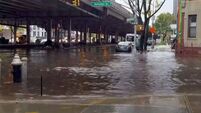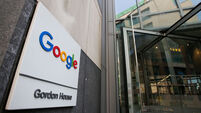Teachers and students in 'AI-limbo' without official guidelines on how technology can be used
Major changes to the Leaving Cert are due to begin from September, including the introduction of project work called additional assessment components (AACs) which will be worth 40% of a student's overall grade.
Schools, teachers, and students remain in “AI-limbo” without official guidelines on how and when the rapidly advancing, and now ubiquitous technology, can be used, or when its considered cheating.
The Department of Education previously planned to circulate guidance on the use of AI in teaching and learning to schools and students by the end of March.
However, this has yet to be published, with a spokesperson for the department confirming to the it now intends to publish the document "in the coming weeks".
Many teachers have expressed serious concerns about the potential misuse of AI in the classroom, and as part of project work at Leaving Cert level.
Major changes to the Leaving Cert are due to begin their rollout from this September, including the introduction of project work called additional assessment components (AACs) which will be worth 40% of a student's overall grade.
There are currently a lot of “worried and stressed out” teachers and school managers when it comes to AI, particularly science teachers who will be the first to see AACs introduced, according to history teacher Patrick Hickey, an Irish expert in AI and education.
“We cannot keep kicking the can down the road,” he said, adding that schools cannot develop AI policies about its use and misuse without guidelines. Drafting a policy can take at least six months.
“With something as transformative and powerful as AI, and as ubiquitous as it is with young people, we need these guidelines," Mr Hickey said.
"Already, we have had some Leaving Cert project deadlines and still teachers — we are in an AI-limbo in terms of policies and training. Common sense would say we’d have all these things by now, there’s talk but no sign.”
He added: “Teachers will not teach what they do not know, and how are teachers to approach new curricula in a position of confidence if they haven’t been given guidelines, policies from the Department of Education and the State Examinations Commission (SEC) that they can stand over when there is a case, or a suspected case, of cheating?
“And is it cheating? To what extent can a student use AI? There are certainly times and places where they can use it, but we don’t know what that line is. It is incredible to think that is the case, two years into the AI revolution.
“Students are using AI but teachers haven’t been given the guidelines, and they haven’t been given mandatory training. They don’t have the AI literacy required to supervise these additional assessment components.
“Most teachers at this point do not know what this thing is capable of and to think at this point that these long-promised guidelines have not been given, I think it's absolutely ridiculous.”
A spokesperson for the Department of Education said the guidance includes information on the “opportunities and risks associated with the use of AI” while also highlighting “what should be taken into consideration to inform schools and teachers in educating on AI and considering the use of AI so that it can be done in a safe, ethical and responsible manner".












